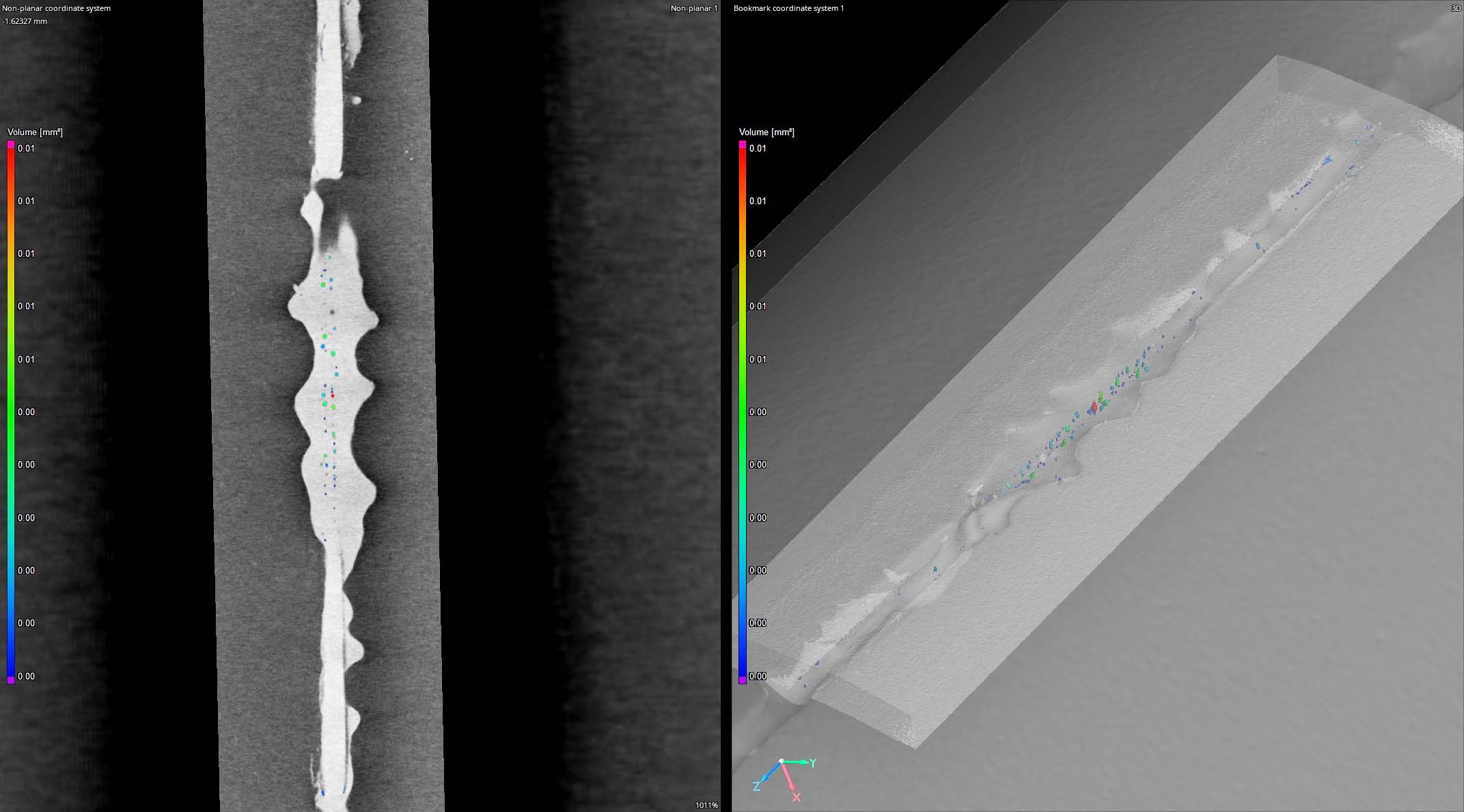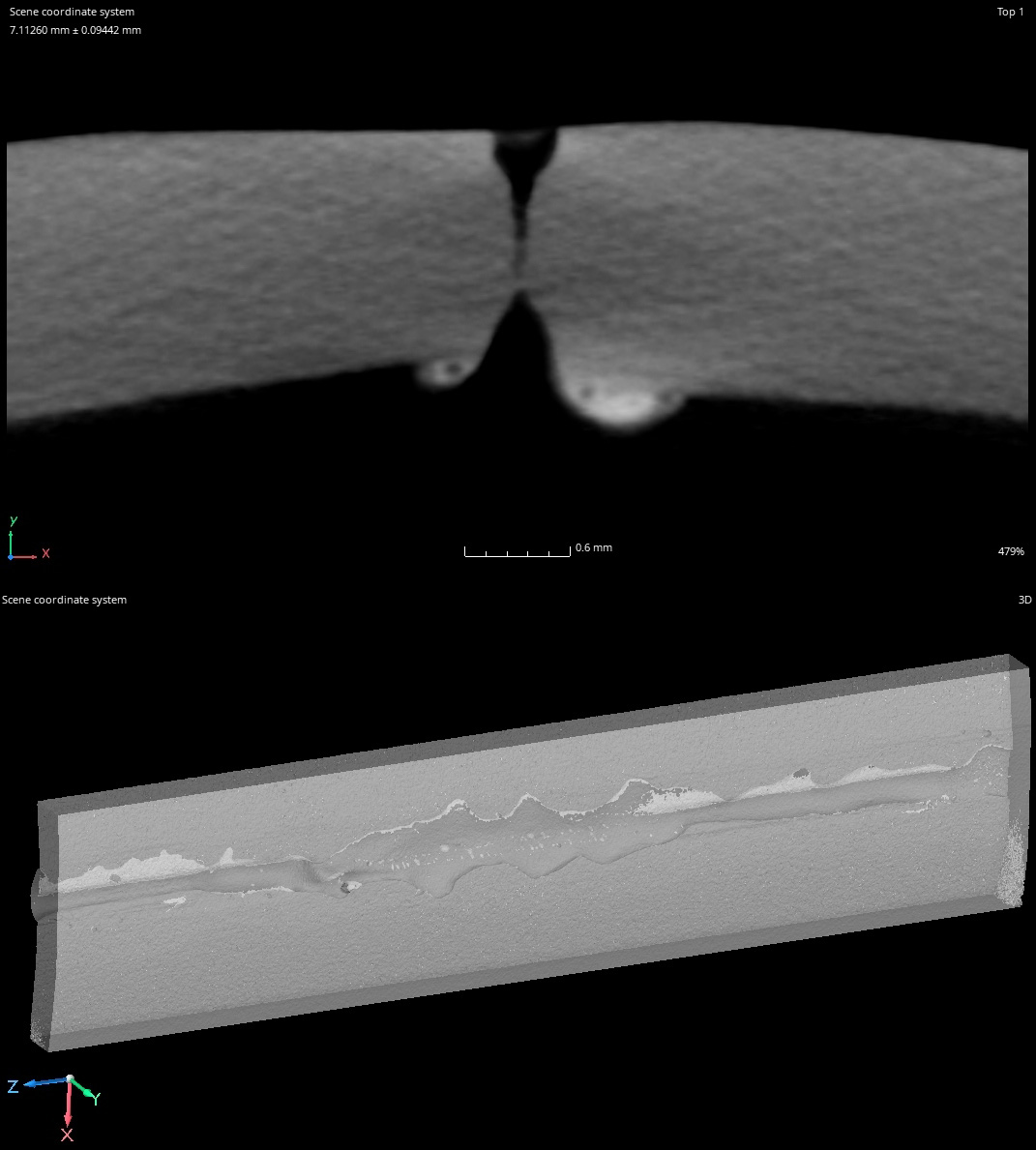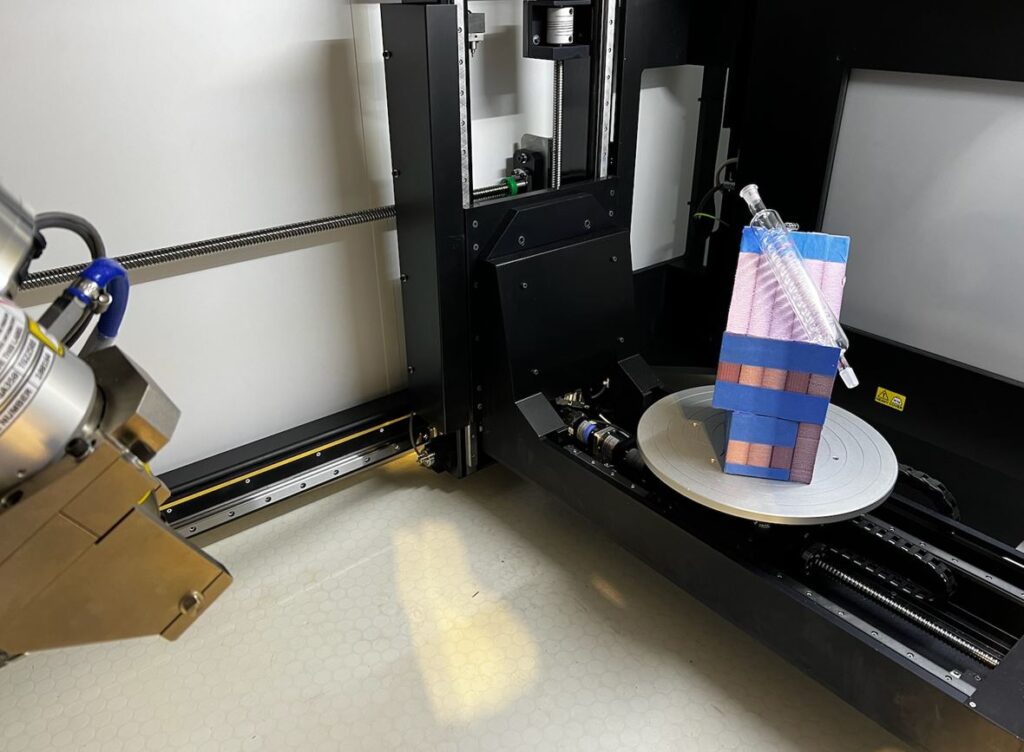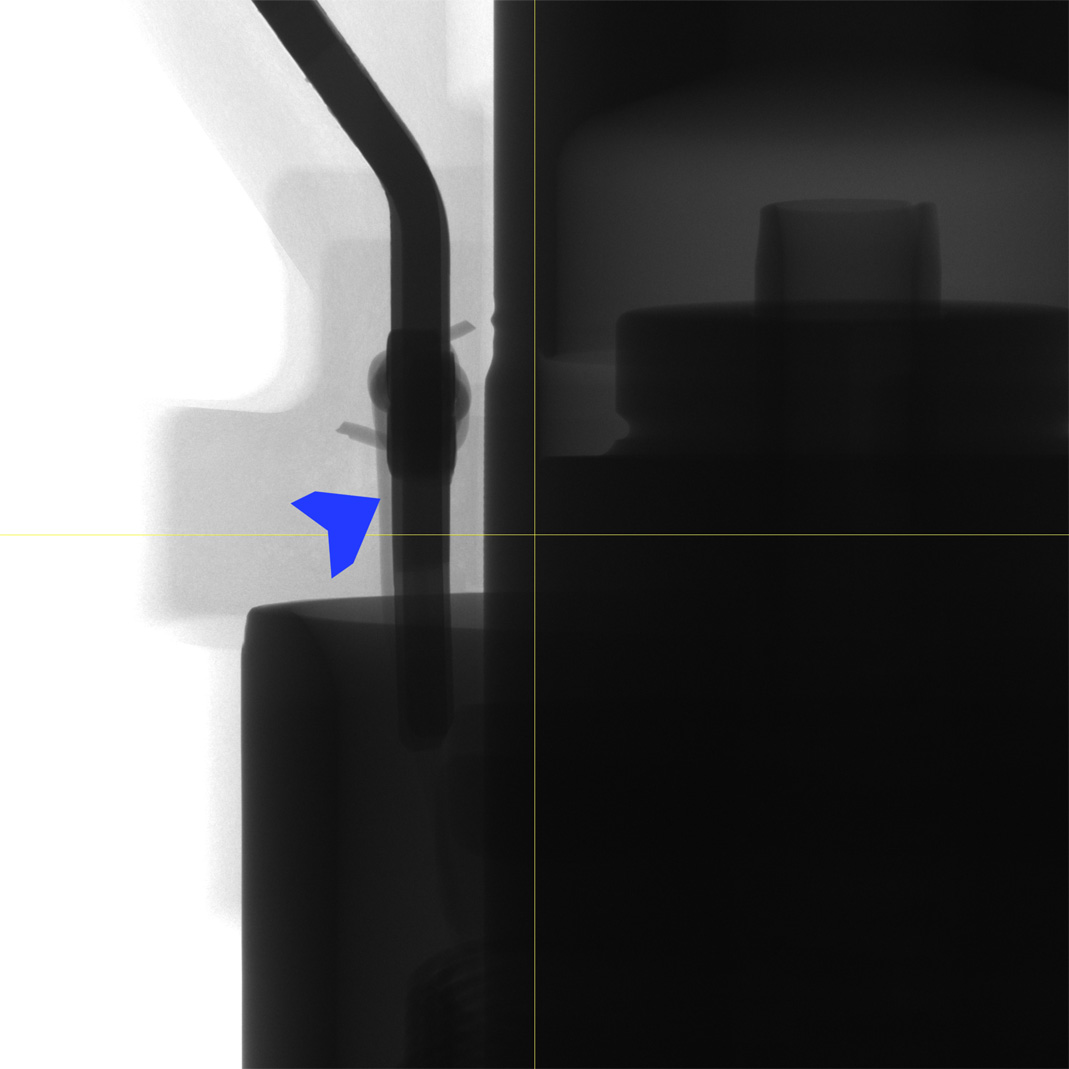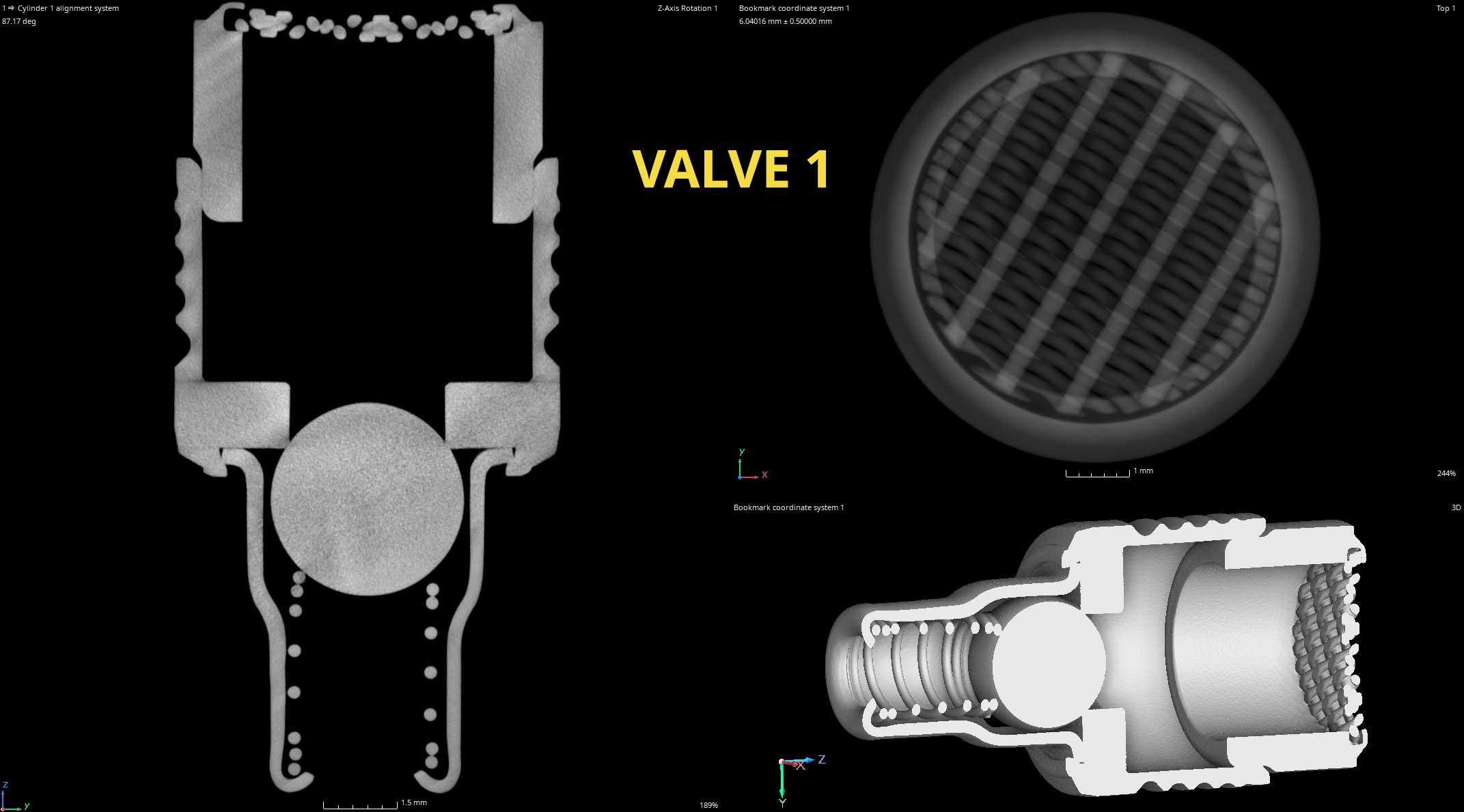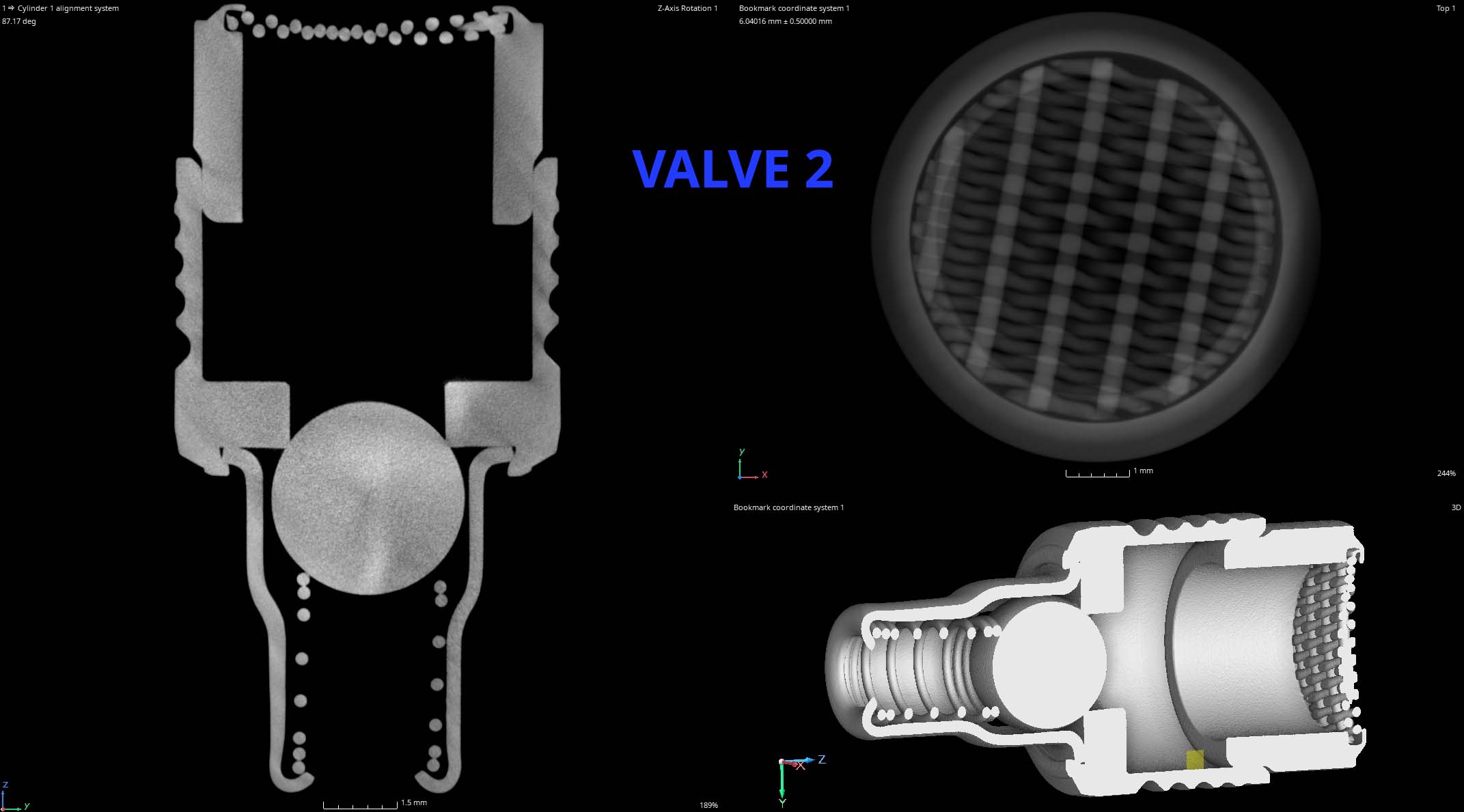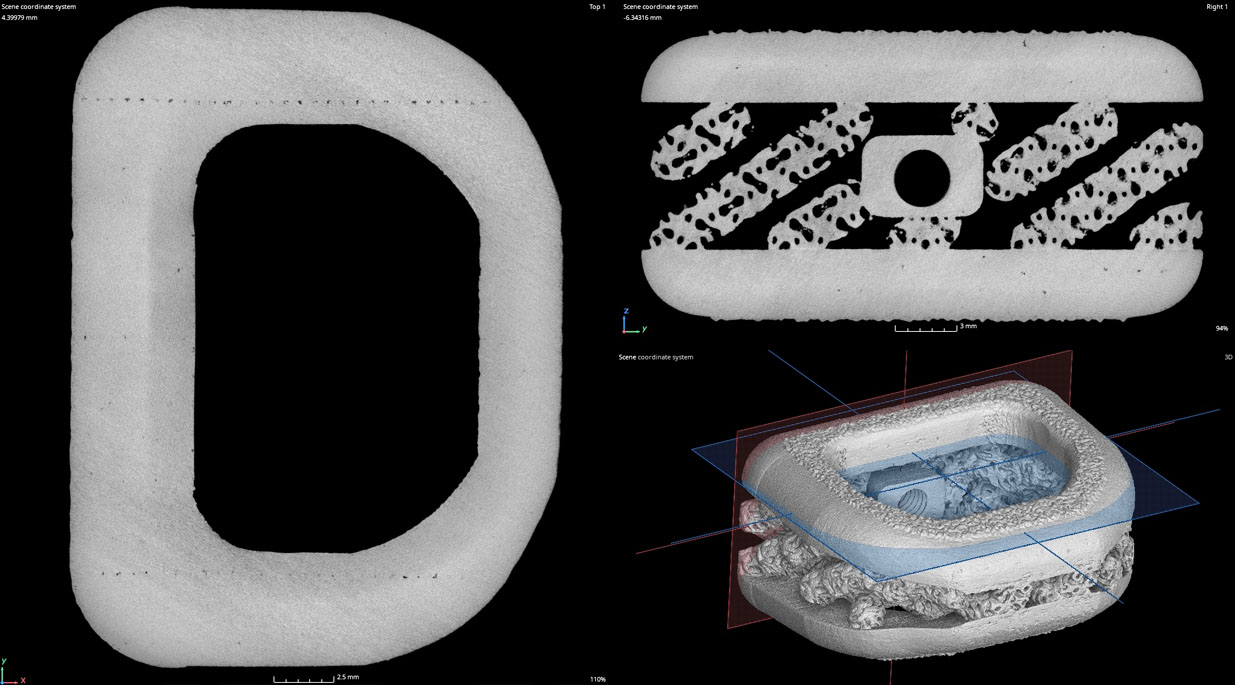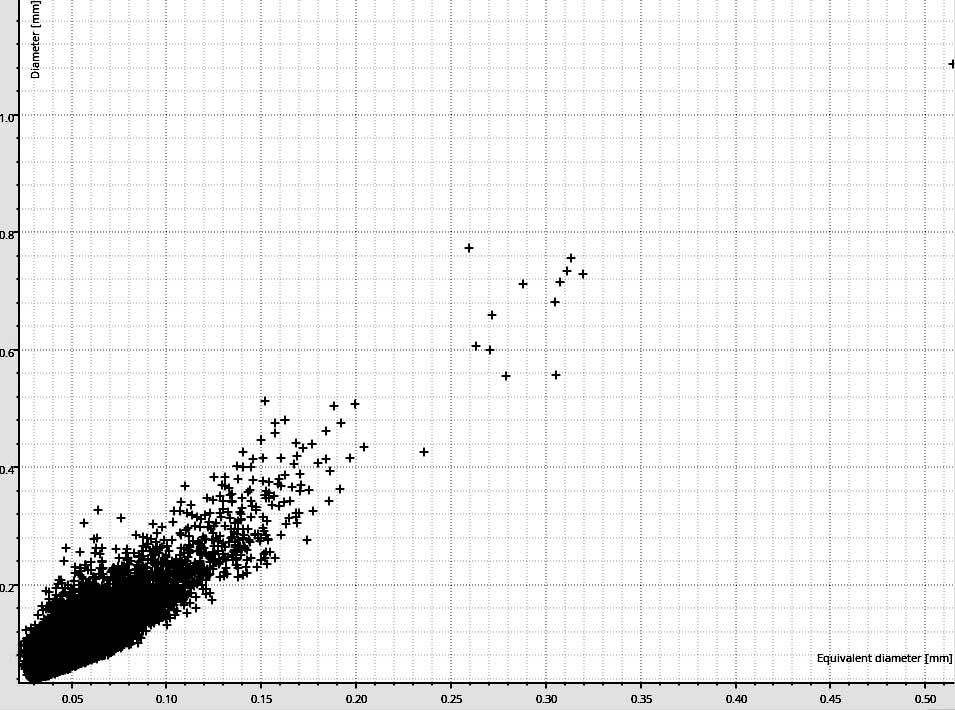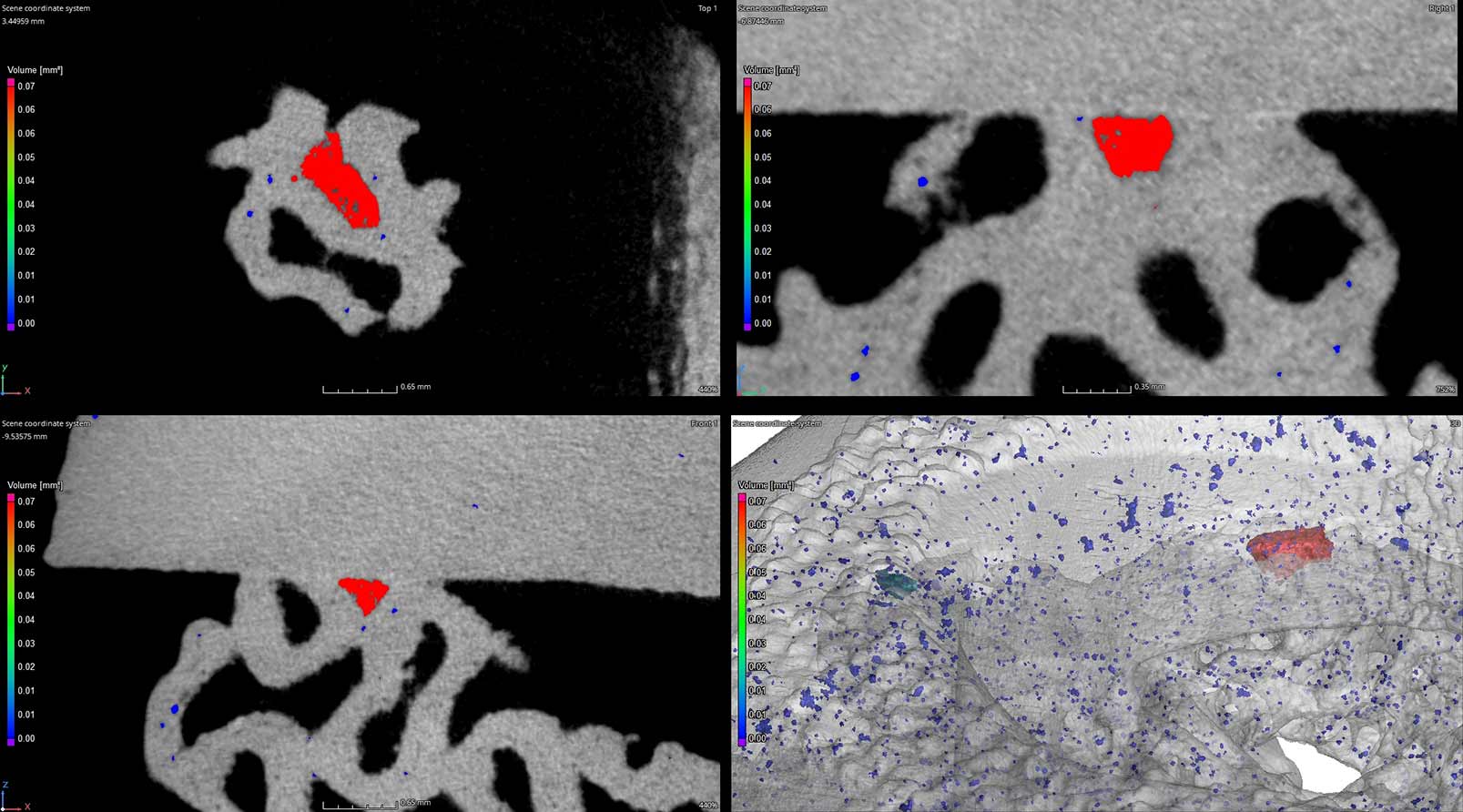IMAGING STEEL TUBES FOR WELD FLAWS
Inspecting tube welds in aerospace, defense, and nuclear applications is not just important; it’s absolutely essential for ensuring safety, preventing environmental contamination, maintaining operational efficiency, complying with regulations, mitigating risks, assuring quality, and ensuring long-term performance.
Tube welds are critical components in various systems such as piping, reactors, and steam generators. Any flaws or defects in welds could compromise the structural integrity of these systems, leading to catastrophic consequences.
Industrial CT scanning is used to evaluate welding processes by offering higher certainty, variable data compared to 2D X-ray or micro-sectioning.


